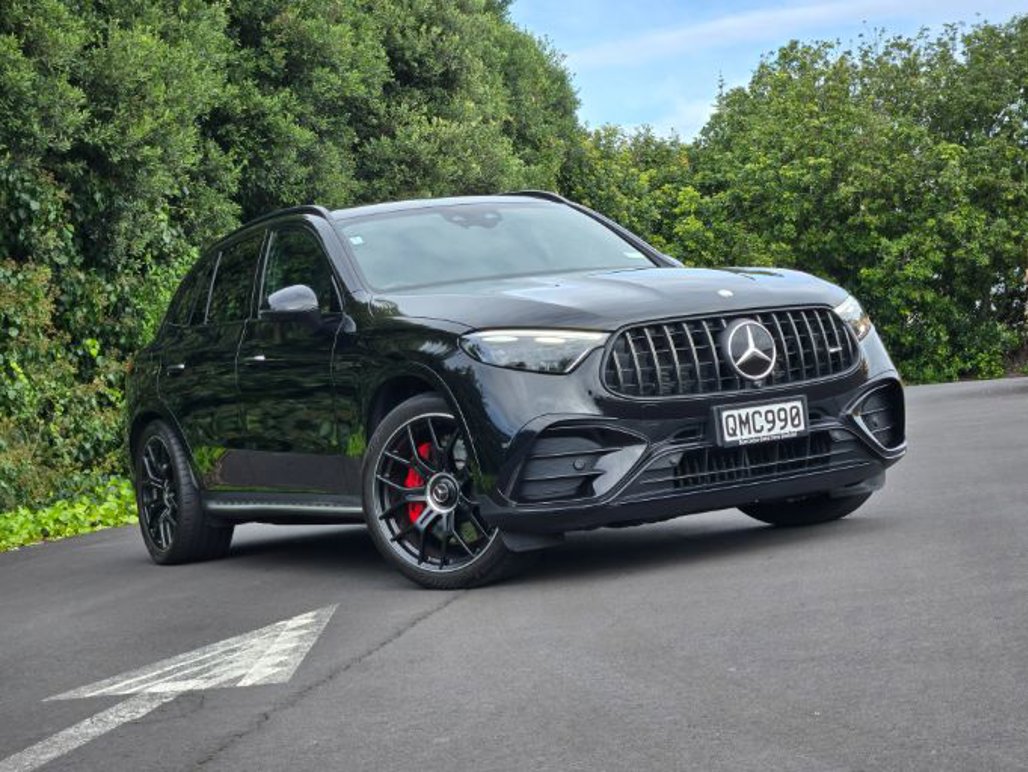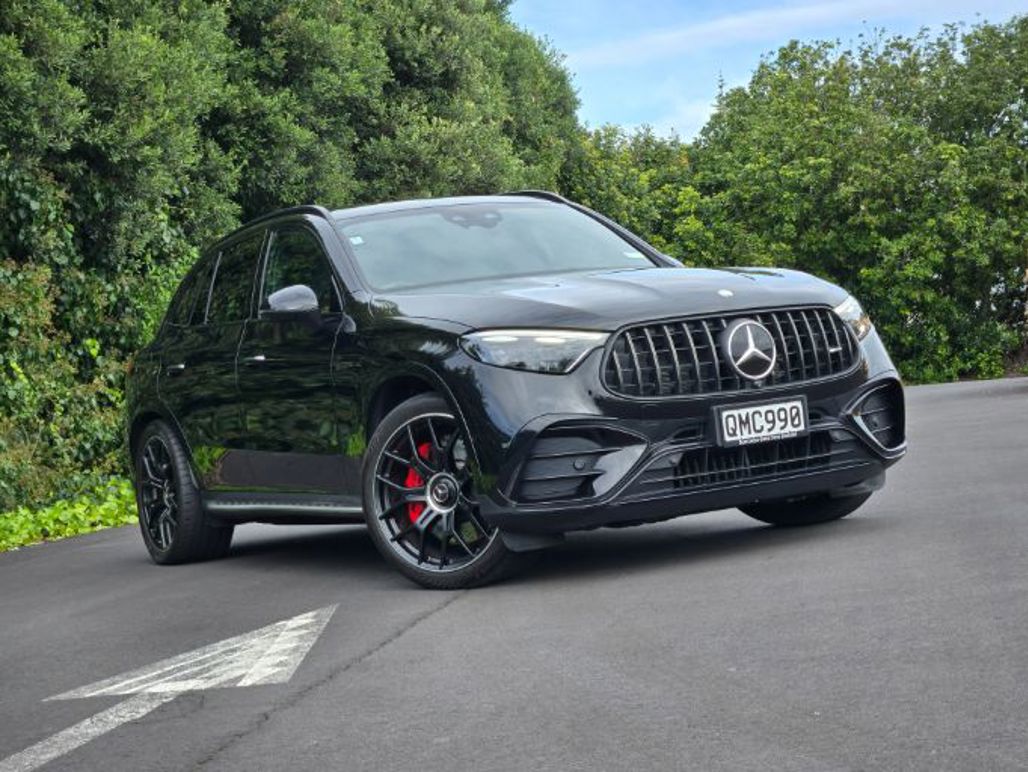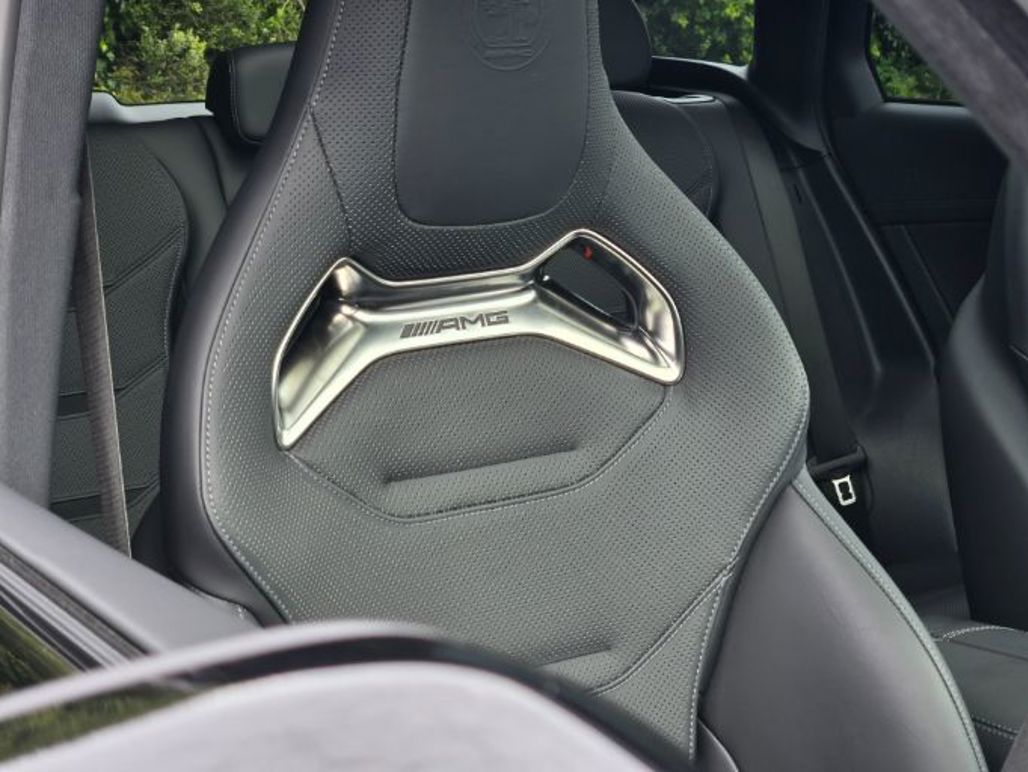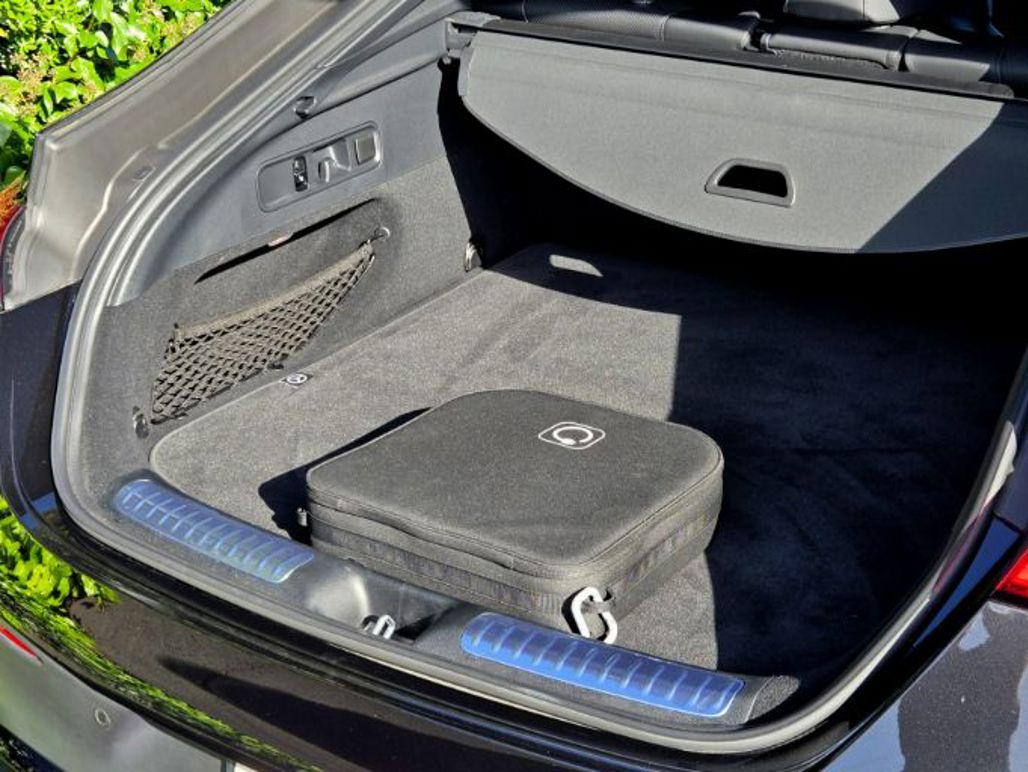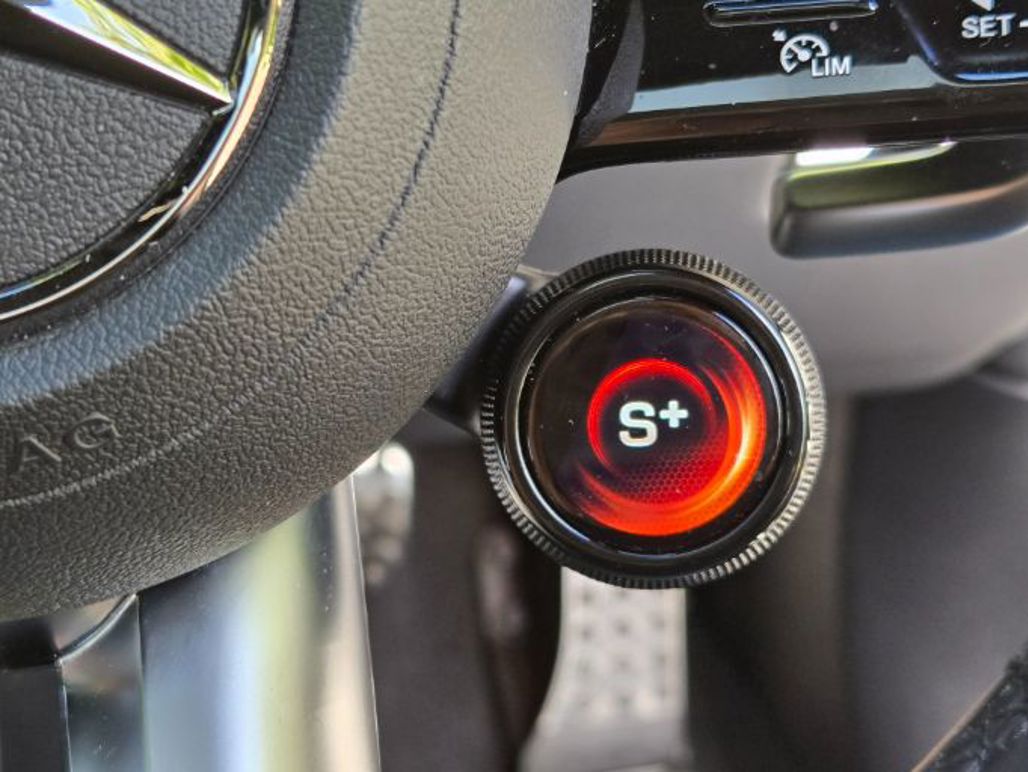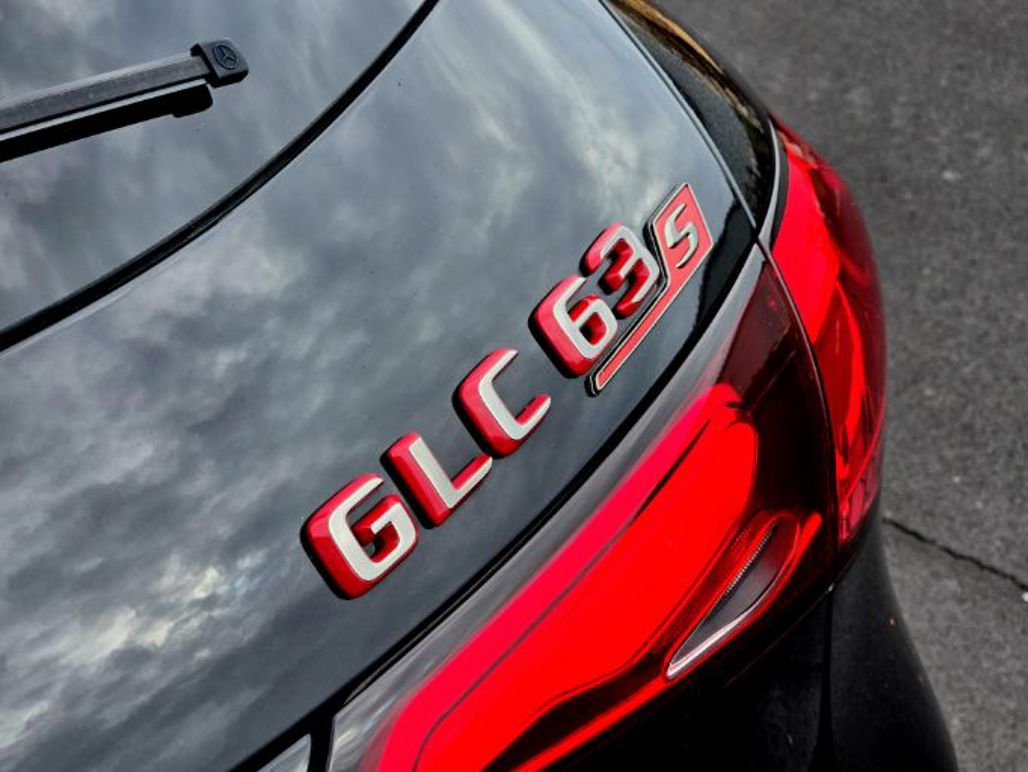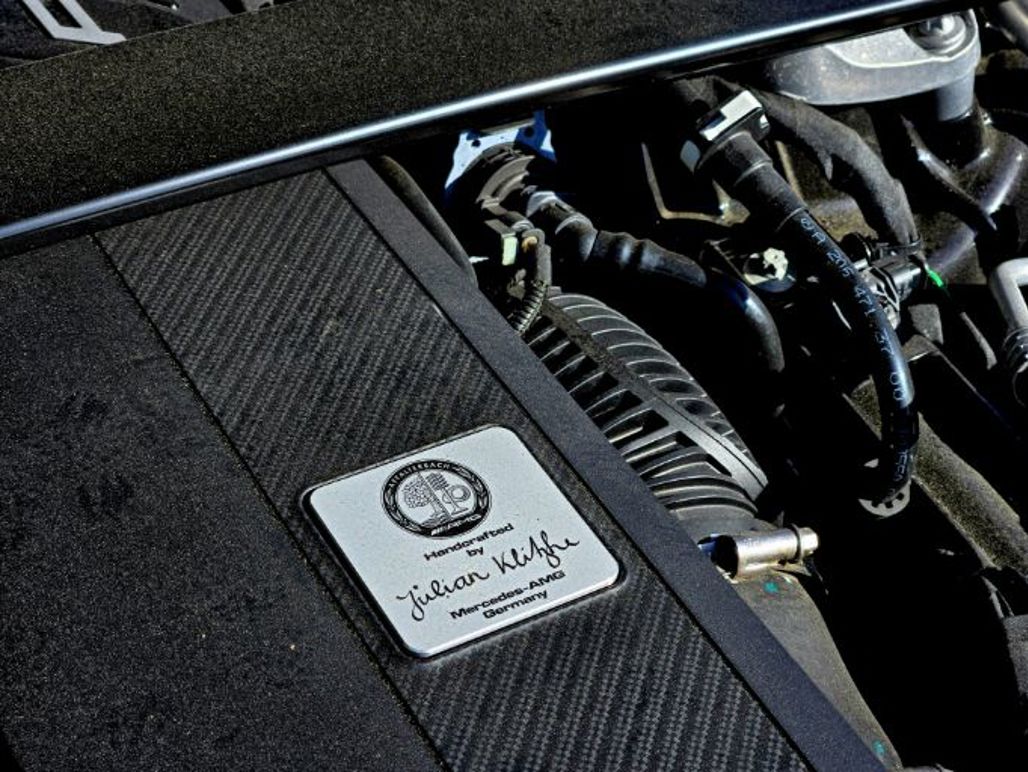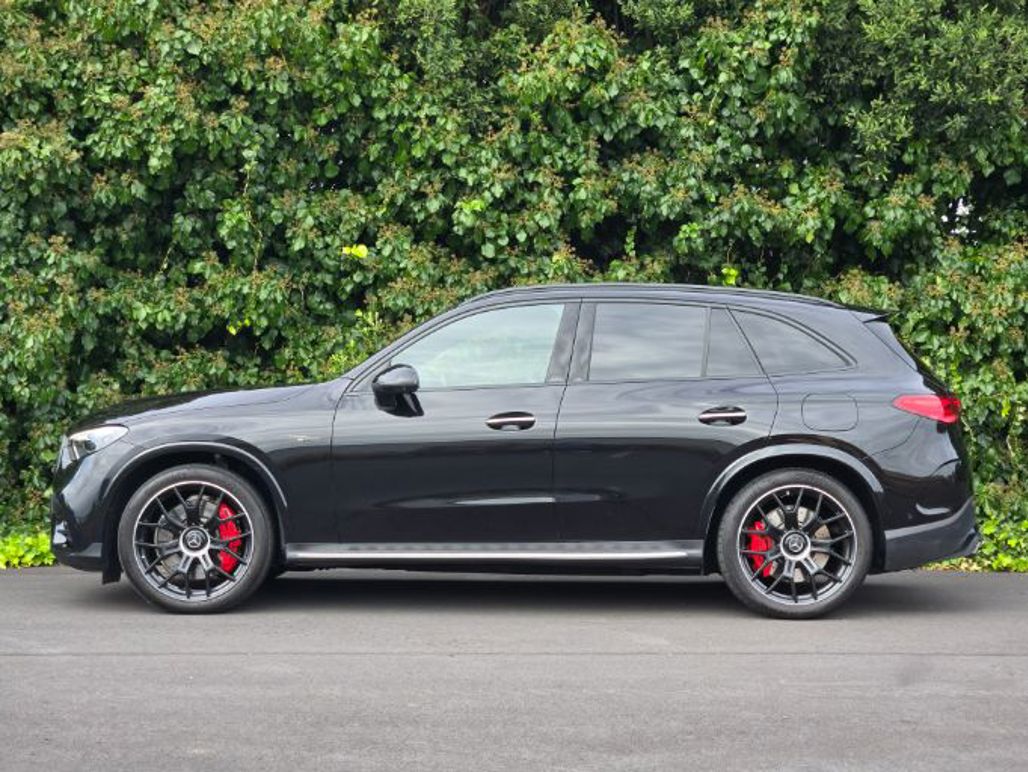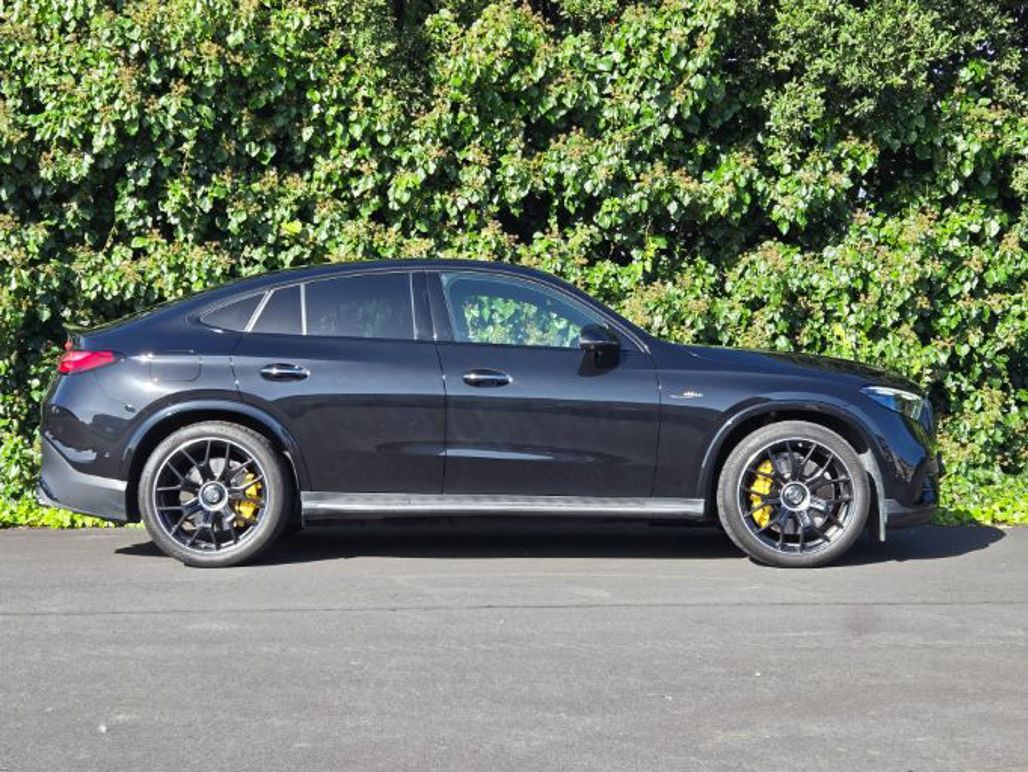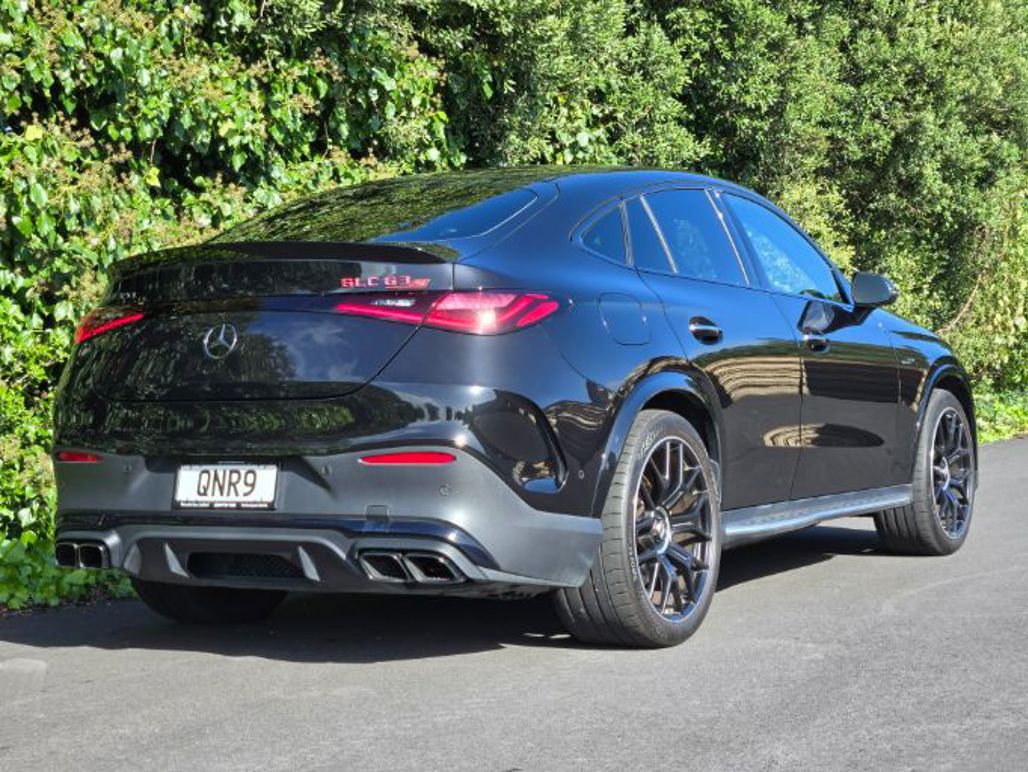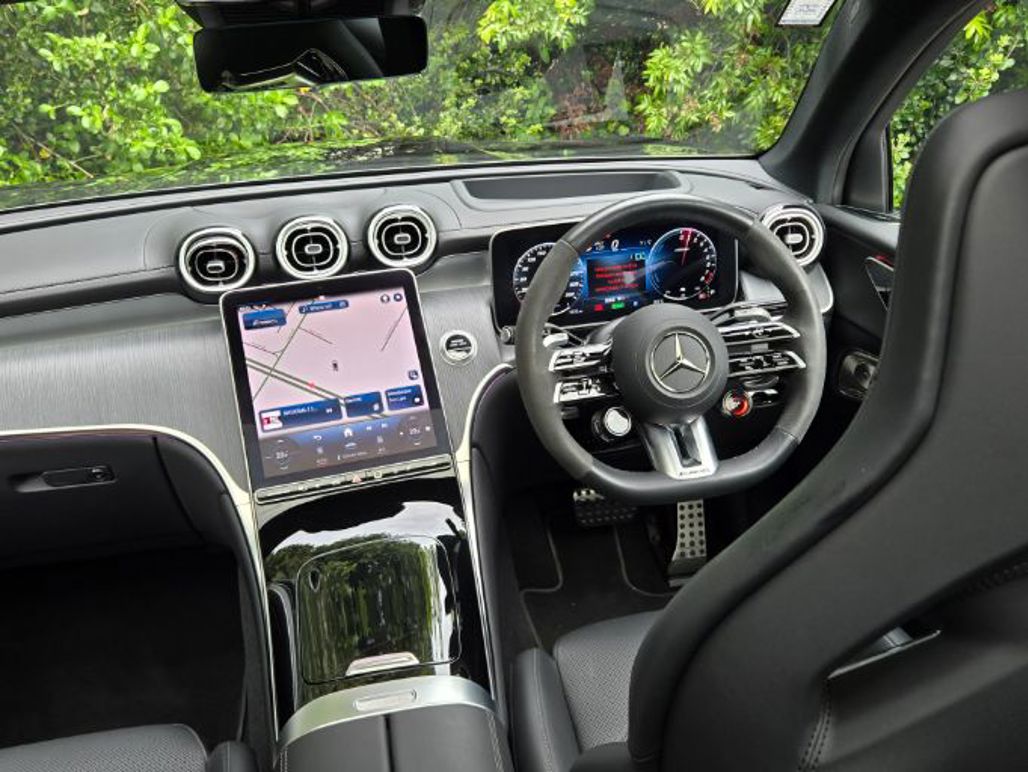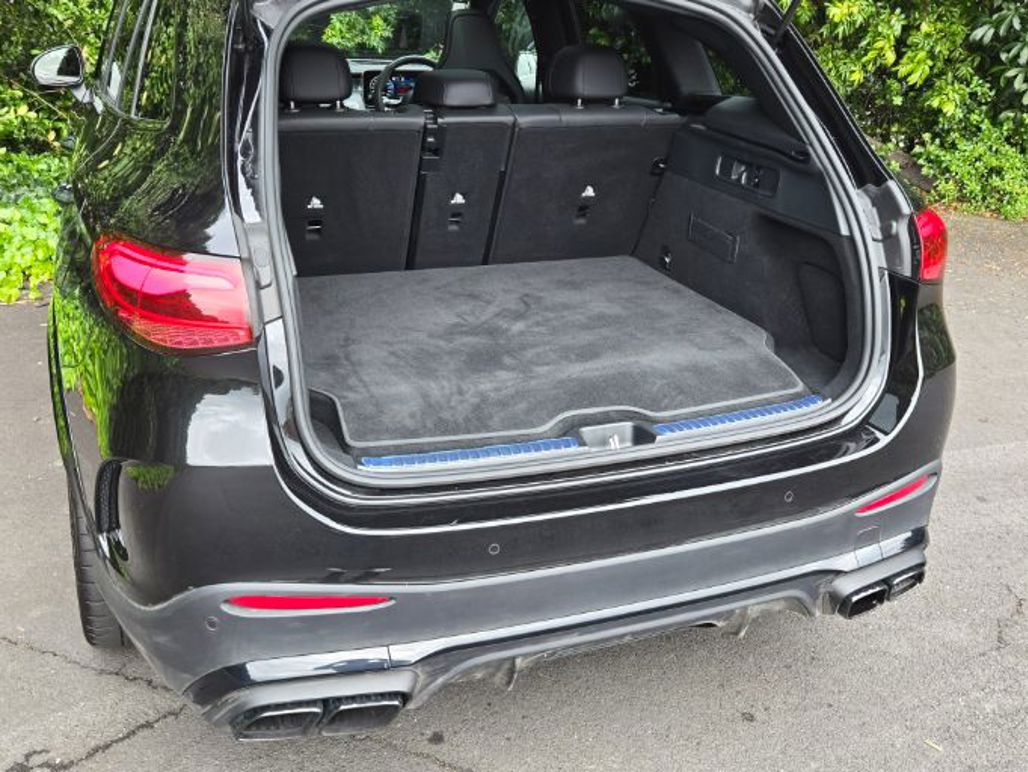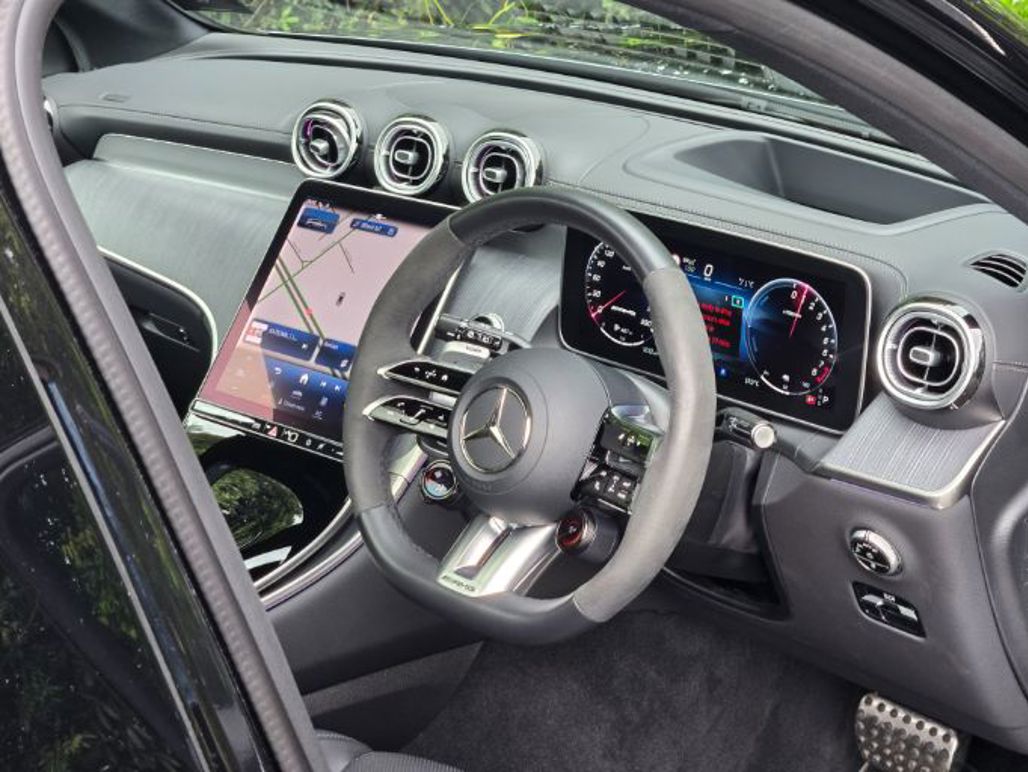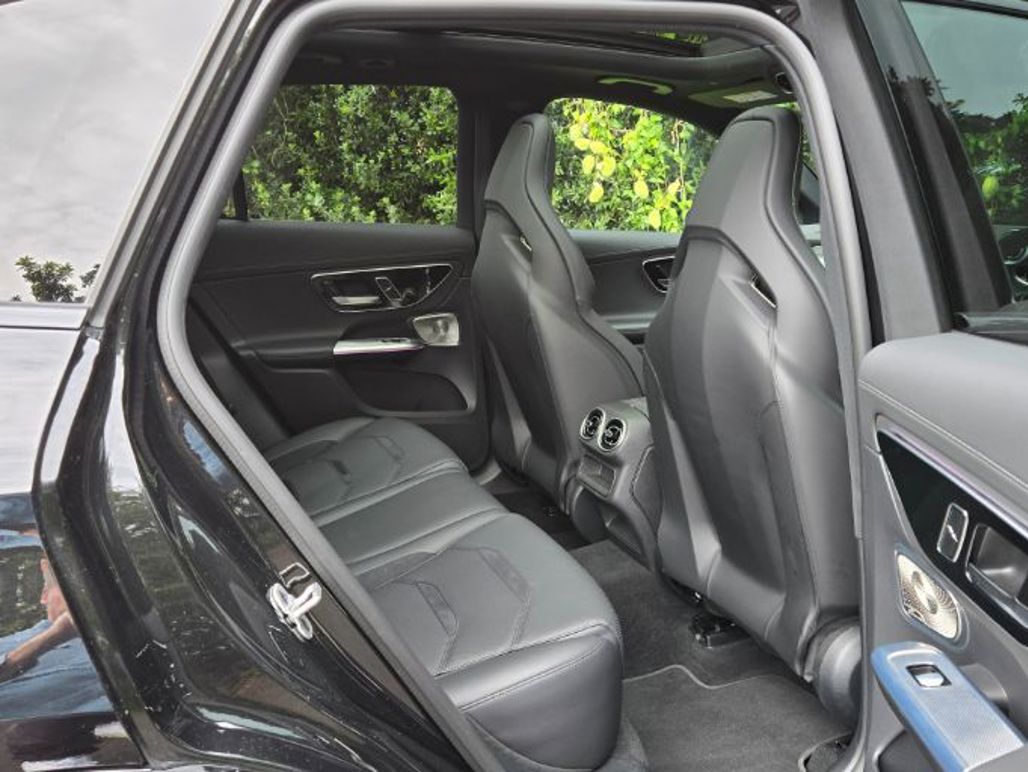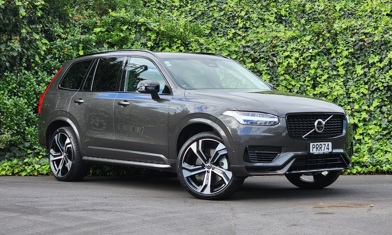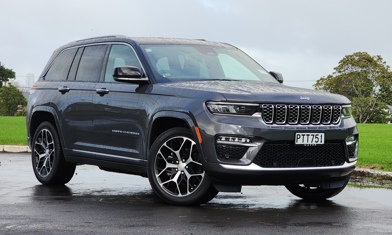When Mercedes-AMG launched the latest C 63 S sedan with “E Performance” technology, meaning a dramatically downsized engine with plug-in hybrid boost, it was all a bit controversial. Never mind that the new 2.0-litre alone produces the same power as the previous V8 (350kW), or that the powertrain makes a bonkers 500kW combined. So many people still miss their extra cylinders and rumbly soundtrack.
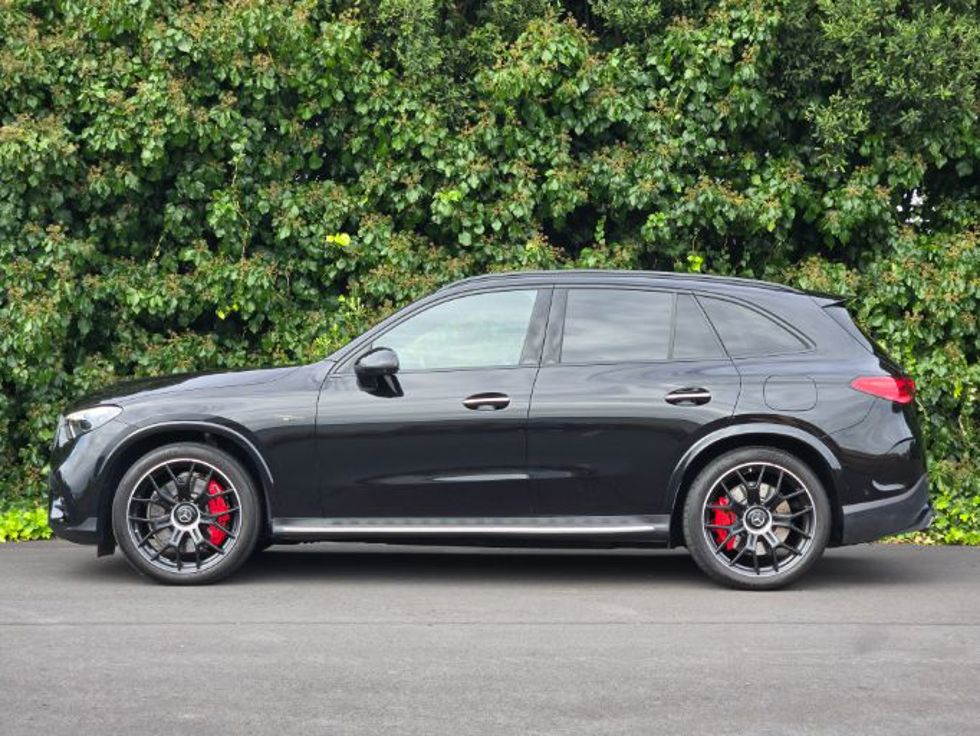
But is the same change to the GLC 63 medium-SUV a bit easier to swallow, given it’s not the same kind of performance icon? We’d argue yes, because we’re talking about a broader range of expectations.
Is it any less bonkers? Absolutely not. The powertrain is a straight lift from the C-Class sedan, so you get the same extreme outputs and surreal level of technological complication.
That goes for both models, the $199,900 GLC 63 S SUV and $206,900 coupe. We’re covering both here and unfortunately both in regulation AMG-black. So no, you’re not seeing things and no, we haven’t made a mistake at the image bank.
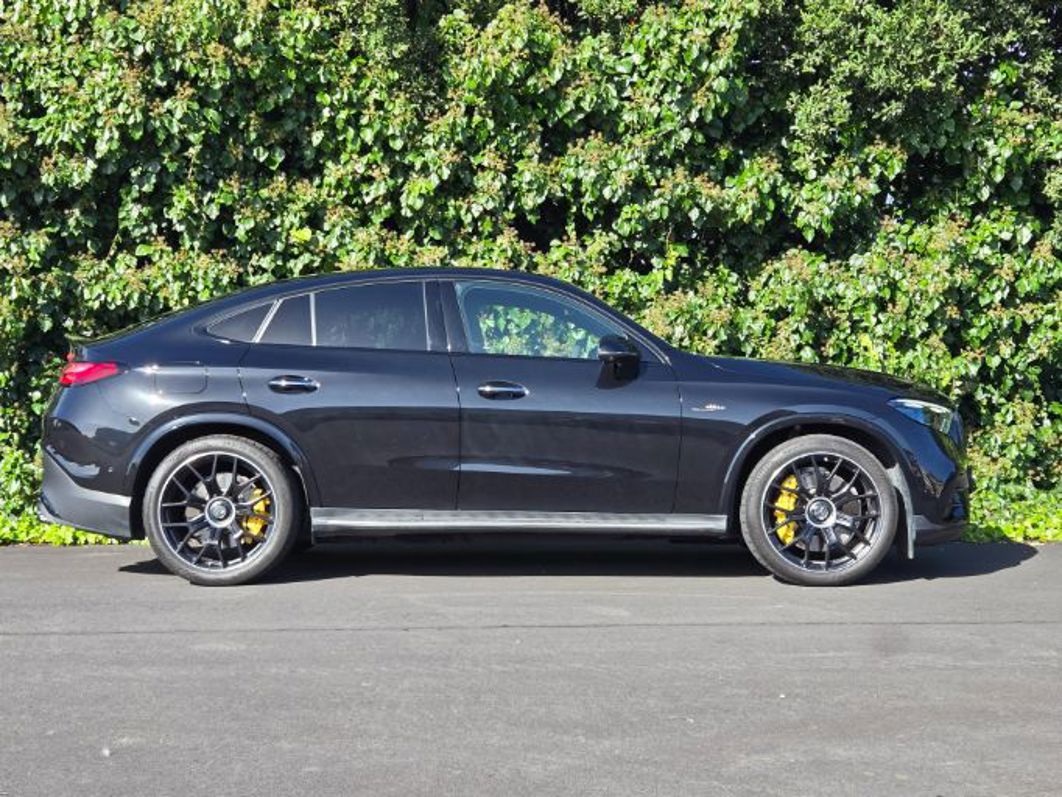
The so-called P3 hybrid setup (Mercedes-AMG has several different types of hybrid tech) combines a hand-built 2.0-litre with a tiny 6.1kWh plug-in battery and two electric motors, to make 500kW/1020Nm.
The powertrain is a straight lift from the C-Class sedan, so you get the same extreme outputs and surreal level of technological complication.
One motor is integrated into the rear axle as part of an electronic differential unit (EDU). The power is direct and because there’s still a mechanical AWD connection, the electric motor can also send power to the front axle. It’s actually a 2-speed, although it doesn’t shift into the taller gear until 140km/h. Not that useful on Kiwi roads, then.
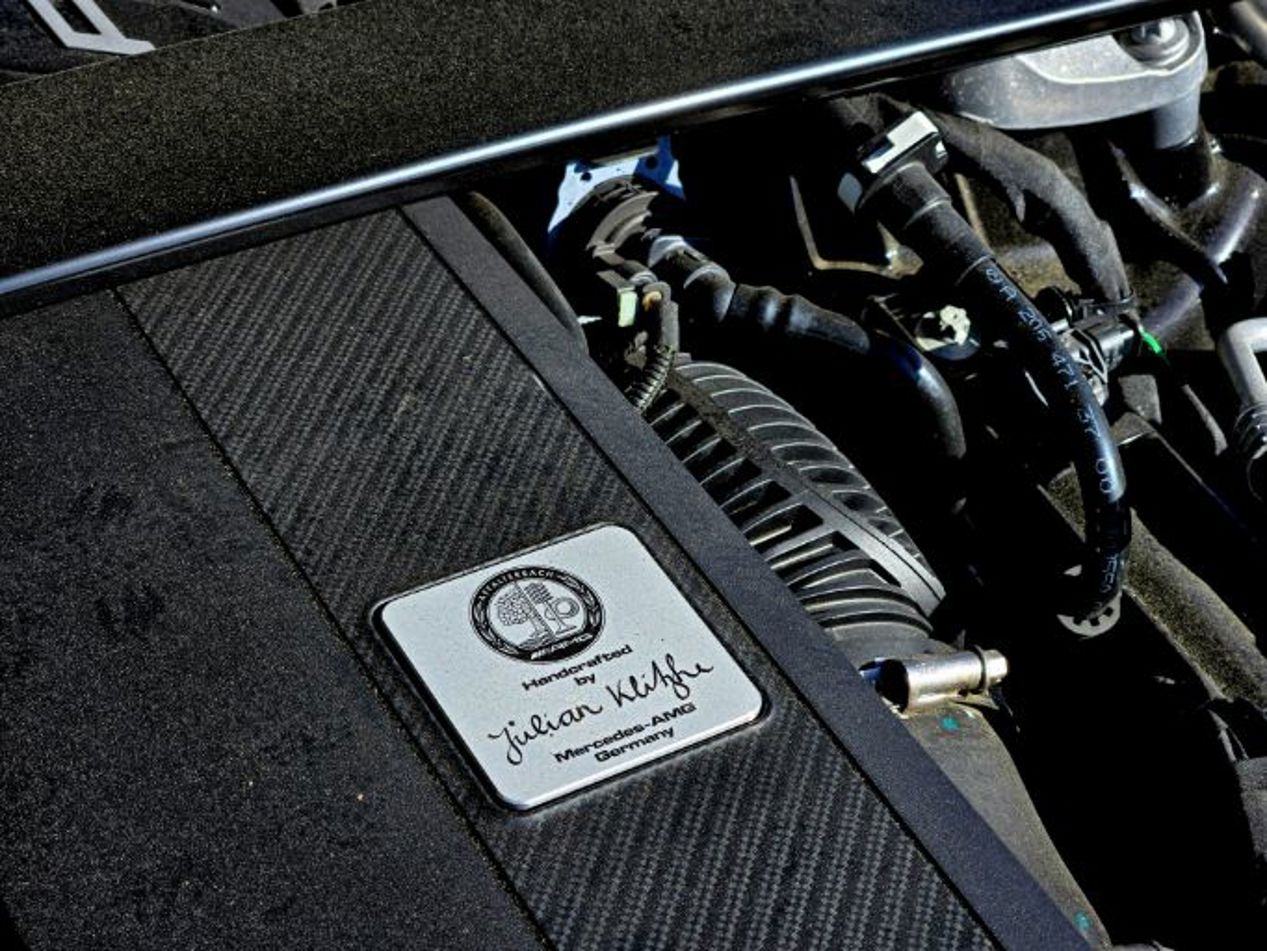
The second motor is attached to the turbocharger to eliminate lag and send things spinning real fast, in double-quick time.
It's 0.1sec slower to 100km/h than the C 63 sedan, probably less for any technical reason than because Mercedes-AMG thinks that should be the pecking order.
That battery size isn’t a typo. It’s there primarily for “fast power delivery and draw” says Mercedes-AMG, not for lots of pure-electric driving. Range is just 12km and although you get a port to plug it in, you don’t really need to: it’s configured to always have enough in reserve for the car to deliver maximum power (it’s kept at optimum temperature all the time, just like a racing car) and the system is very good at self-charging it when it runs low, especially in Sport+ and Race modes.

There’s also a lot going on in the chassis: AMG Ride Control adaptive damping, some high-tech anti-roll assistance and 4-wheel steering. The rear wheels turn the opposite way to the front up to 100km/h for agility, then the same way for smoother high-speed manoeuvres.
Mercedes-AMG does know its customers and makes Sport+ both showy (lots of crackling exhaust, for example) but also very usable on the road.
It’s all pretty wild on paper and yes, it’s incredibly fast: 0-100km/h in 3.5 seconds is astonishing and although still 0.1sec slower than the C 63 sedan, probably less for any technical reason than because Mercedes-AMG thinks that should be the pecking order.
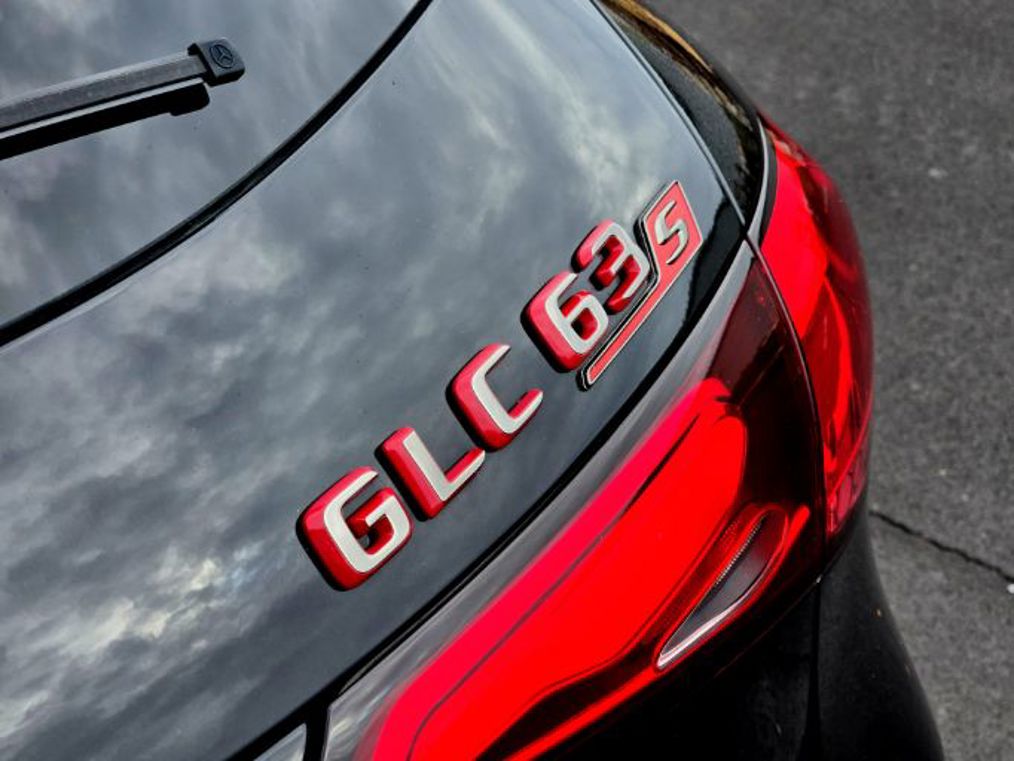
It doesn’t always feel wild in practice, though. Perhaps it’s the extremely linear way that the powertrain piles on the performance, but this car produces far fewer white-knuckle moments than you might expect given the sheer speed involved. Good thing or bad thing? Depends on your expectations, but for an SUV it’s probably a plus.
It does feel busy, though: you’re keenly aware there’s a lot of mechanical and electronic stuff going on in fast driving. Again, that’s either good or bad depending on what you want from your performance-SUV, but one thing’s for certain: it’s a very different experience from the previous biturbo-V8.
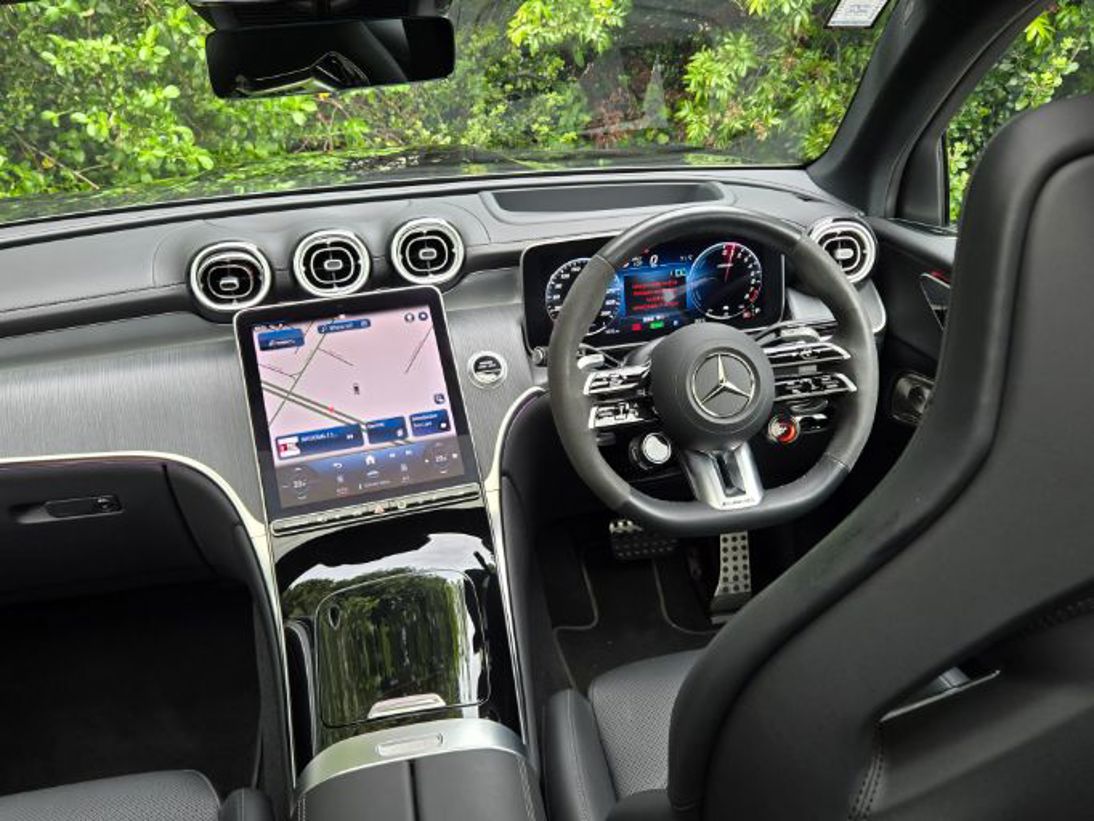
We did keep the GLC 63 charged up from an external source most of the time, for no other reason than it was parking at the office next to a charger. So we drove around a lot in the selectable EL mode, although not very far; the car tended to stop drawing from the battery when it got down past around 30%.
After a few days it was either that or Sport+ and skip the middle modes. Mercedes-AMG does know its customers and makes Sport+ both showy (lots of crackling exhaust, for example) but also very usable on the road; it changes gears with a bang but still does so at sensible speeds when you’re driving around town, for example.
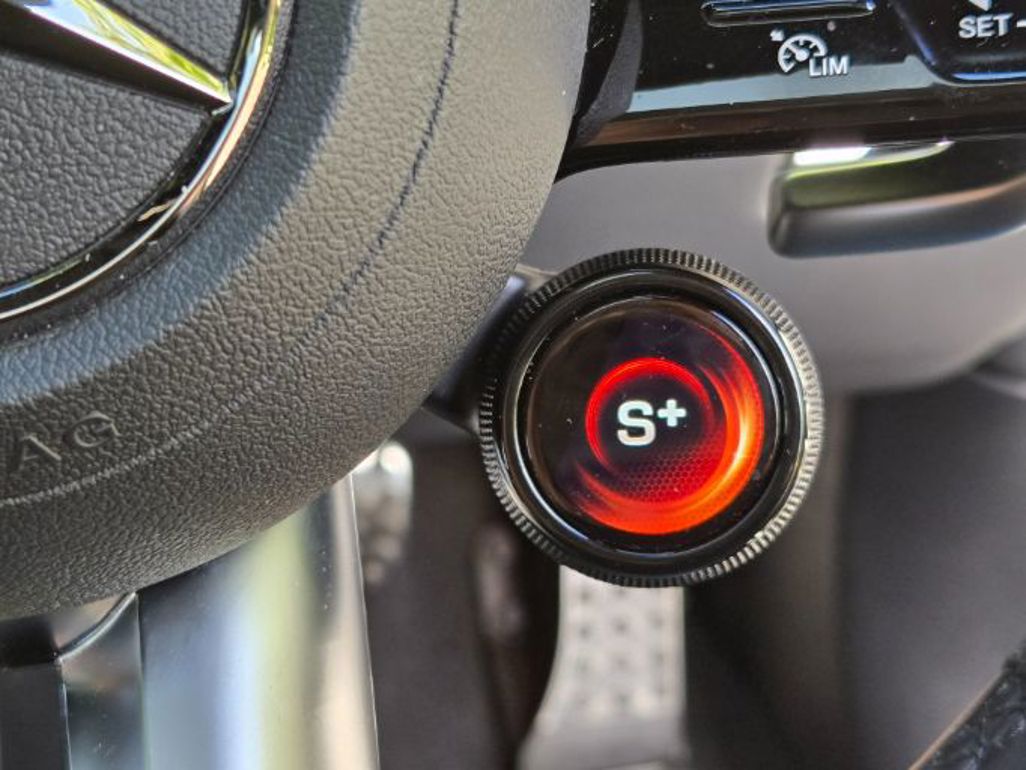
The GLC 63 S E Performance is a remarkable engineering achievement and a bit performance-nerdy, because it’s actually quite understated in some ways. There’s unique styling on the outside, but all nicely integrated. Inside, you get the expected AMG-specific instrumentation, trim and snug seats, but it still all passes the standard Mercedes-luxury test. Well, maybe not the seats… they’re a bit more obvious.
So, SUV or coupe? As always, there’s very little difference between these two iterations of GLC, so it’s a matter of personal taste and whether you like your SUV-profiles straight or strangely descending.
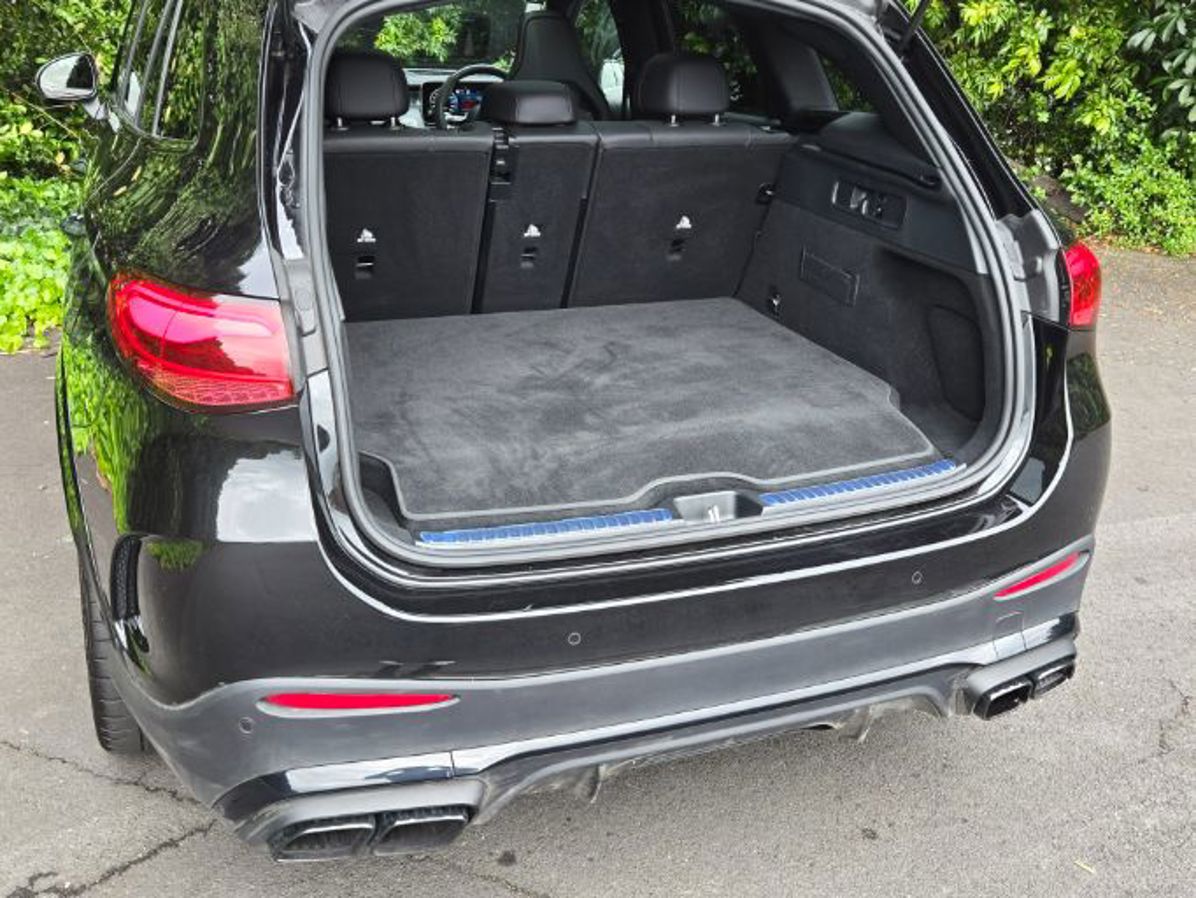
There’s less headroom in the coupe of course, but it’s not bad at all. Bootspace might be more of a thing. The battery hardware underneath takes a lot out of the 63 SUV, which drops from 620 litres in a regular GLC to just 470l in this model. The coupe is even smaller, although oddly Mercedes-AMG doesn’t quote a seats-up figure; even more oddly, there’s a noticeable step-up in the SUV boot floor to go over the battery, which isn’t there in the coupe. Huh?
A regular GLC coupe has a 190l-smaller boot than the SUV, but that would make the AMG model just 280l and it seems bigger than that. And frankly, we can’t waste any more time on this. The 63 has a much smaller boot than a normal GLC and the coupe’s is much smaller than the SUV, despite being $7k more expensive. And that’s it.
Bootspace and price should theoretically be quite important for SUVs. With these two… they’re really not.
How much is the Mercedes-AMG GLC S E Performance?
Same as the C 63 S E Performance sedan, funnily enough: $199,900 for the SUV. The coupe version adds $7k to total $206,900.
What are the key statistics for the Mercedes-AMG GLC S E Performance?
Mercedes-AMG's most complex "P3" hybrid powertrain combines a 2.0-litre turbo-petrol 4-cylinder and two electric motors to make a maximum of 500kW/1020Nm. Yes, peak torque cracks four figures...
Is the Mercedes-AMG GLC S E Performance efficient?
It's not really about that. It has plug-in EV capability, but the 6.1kWh battery is there for power and more power and only delivers 12km of range. But use it wisely and you'll be able to achieve the official claim of 7.3l/100km.
Is the Mercedes-AMG GLC S E Performance good to drive?
It's staggeringly fast and very capable indeed, with all kinds of chassis technology: adaptive dampers and 4-wheel steering, for example. There's a lot going on... but really, you'd need to get it on a racetrack to really explore what it can do.
Is the Mercedes-AMG GLC S E Performance practical?
Slightly thumpy urban ride aside, the GLC still delivers most of the practicality of your average GLC. The boot does suffer, though, thanks to the bulky battery underneath: the SUV loses 150l for a total of just 470l. Mercedes-AMG doesn't quote a figure for the coupe version for whatever reason, but it's... smaller again.
What do we like about the Mercedes-AMG GLC S E Performance?
It's a technologically fascinating piece of gear and the outputs are jaw-dropping any way you look at it; it's a performance-nerd delight. With adaptive-this and rear-steer that, the handling limits are quite incredible. The GLC is a classy SUV regardless of model and visually, this 63 version is actually quite understated.
What don’t we like about the Mercedes-AMG GLC S E Performance?
The powertrain and chassis feel pretty busy at all times - none of the relaxed cruising the previous V8 offered. Despite the immense performance and handling capability, it's not as much... well, fun as you'd think. And you do loose quite a lot of bootspace to the battery hardware underneath.
What kind of person would the Mercedes-AMG GLC S E Performance suit?
Somebody who finds the over-the-top performance technology fascinating, and isn't fixated on the loss of V8 power for Mercedes-AMG's C-sized models.

